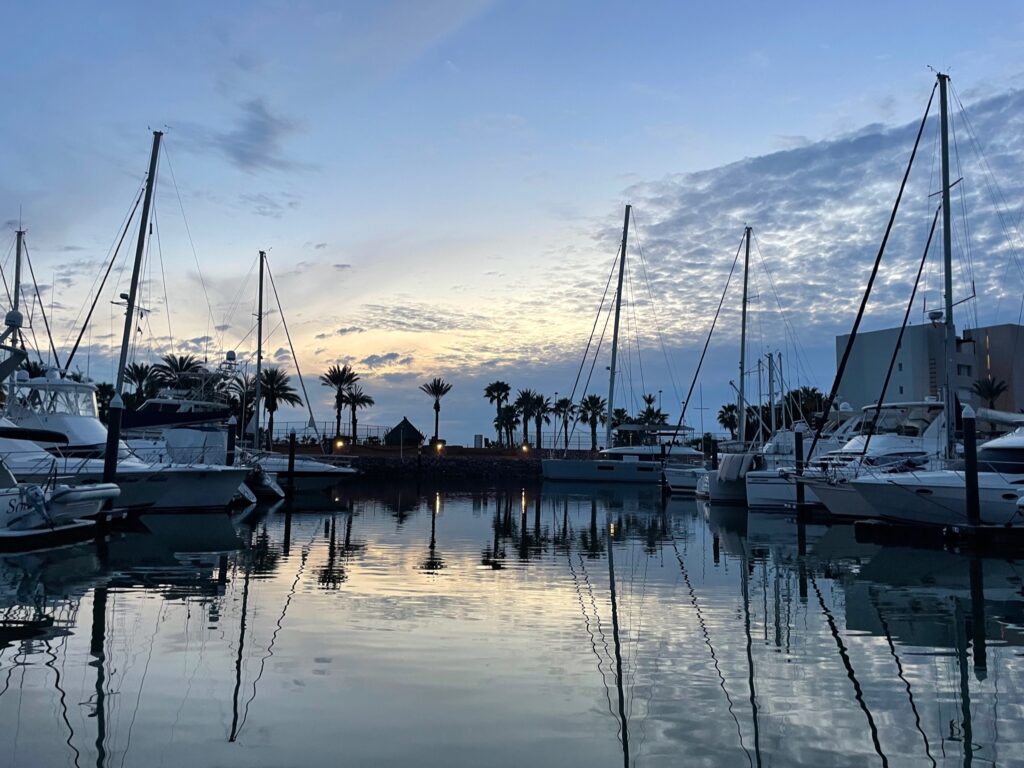Sunrise on Sunday, February 12
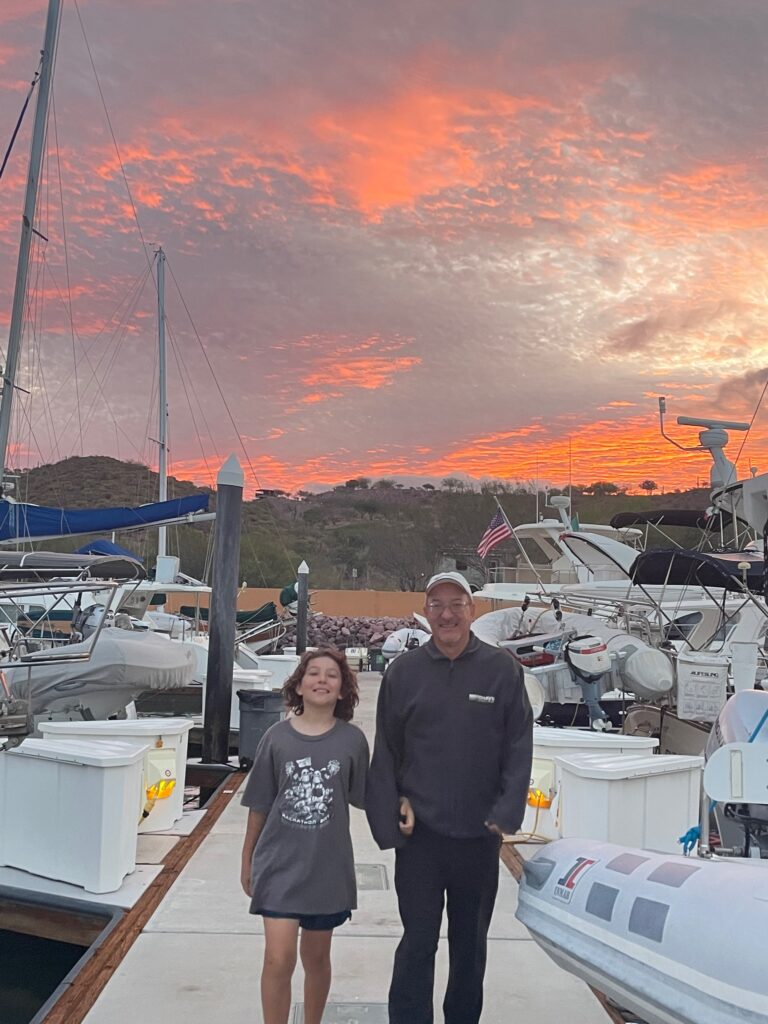
We were craving Italian food. We took the 1310 shuttle into town to get some. The shuttle was about 12 minutes late (relevant for Monday’s story).
Someone had recommended a place called Locos Por la pasta (Crazy for Pasta), located across the street from the north side of the art museum.

The restaurant was small and had a vibe more like a cafe or wine bar than a restaurant. As you walk inside, the kitchen was on the right and seating on the left. The kitchen was open, and after we ordered, we watched them cook our meals.
The pasta chef pulled out several containers of pre-measured ingredients and dumped them into a mixing bowl. She mixed the ingredients briefly, then pulled out the dough and kneaded it on a cutting board. After a few minutes of kneading, she sliced the dough. She rolled one of the slices with a rolling pin, then she put the slice through a kitchen-aid mixer with a pasta attachment several times, folding it in half a few times, until the texture was consistent.
It took her only a moment to change the attachment. She fed the flattened dough through the attachment the same way she had with the previous attachment, but this time it cut the dough into fettuccine. She repeated the process with the next slice. Meanwhile, next to her, a woman was making the sauce by hand in a regular kitchen blender. It appeared there were stewed tomatoes in a pot on the stove, and she was mixing the stewed tomatoes with other ingredients for the sauces.
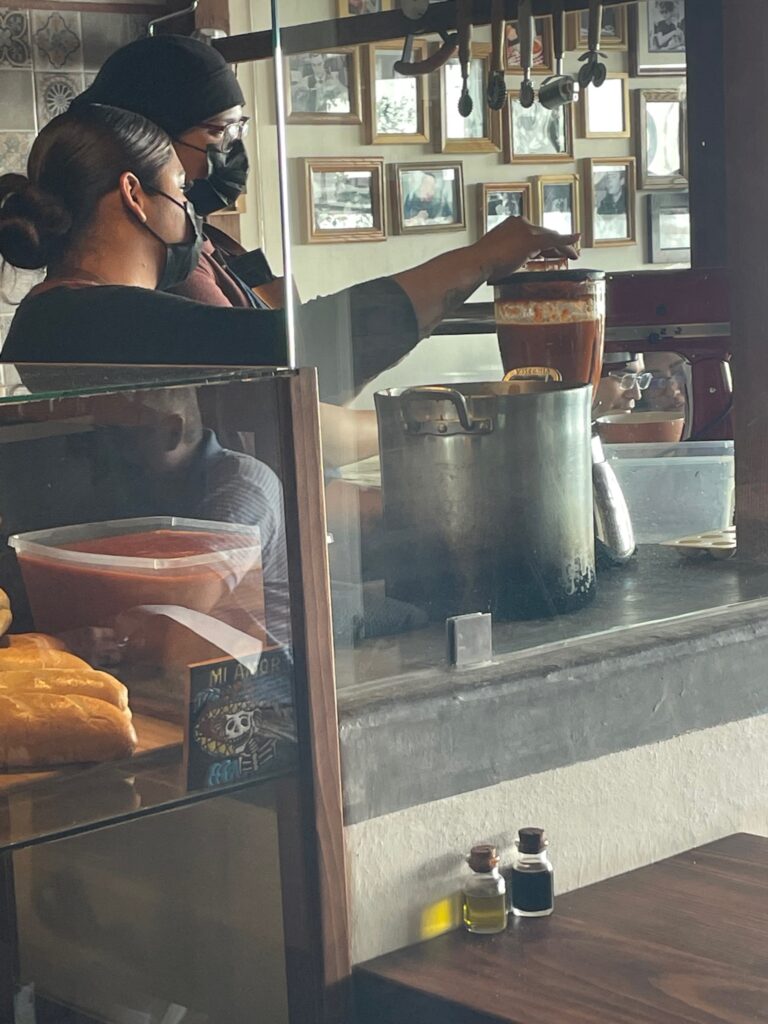
The food was fantastic. It was exactly what we’d been craving, After lunch, we went over to the art museum. We were surprised to find that the admission was free. The entrance was a split level, so we chose to start by going up.
The upper floor was devoted to spirituality in Mexican folk art. There were signs describing traditional religious beliefs and how they combined with the beliefs of the Europeans and Africans to create evolving beliefs — and these were the artistic representations of the assorted beliefs. The first room was all devil characters. Many of the characters looked strikingly like the characters in art from Bali.
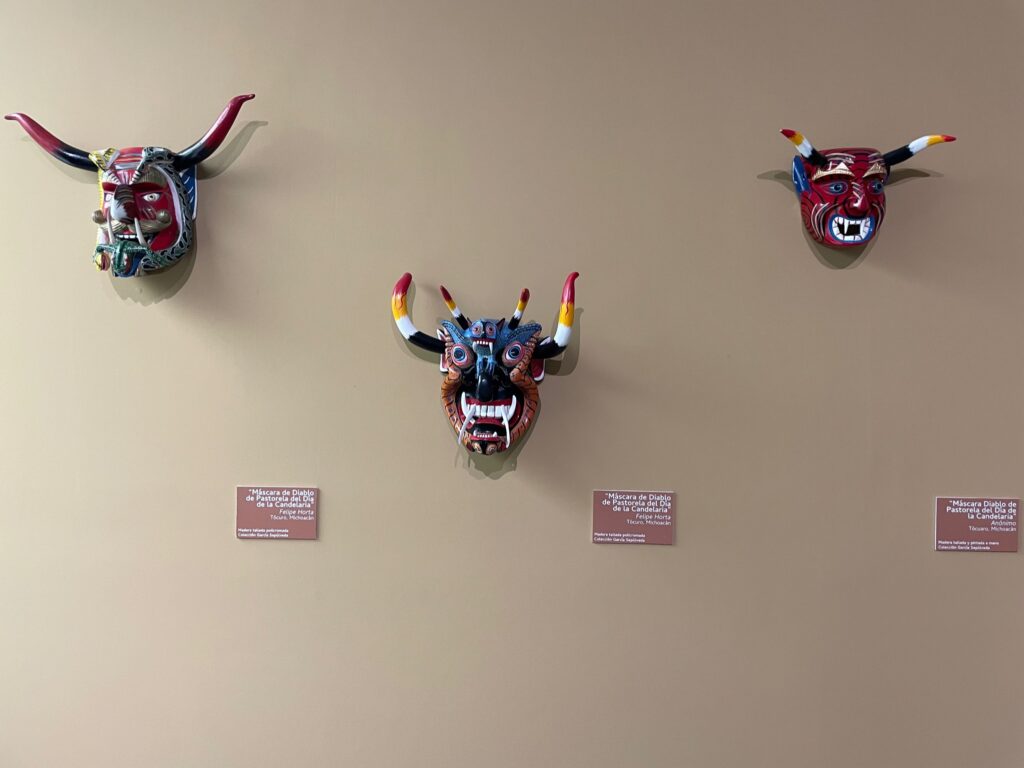
The next room was primal art, showing the traditional gods of the indigenous peoples. Below are two different geographic area’s depictions of the goddess Tlanchana, the goddess of abundance and fertility in the waters.
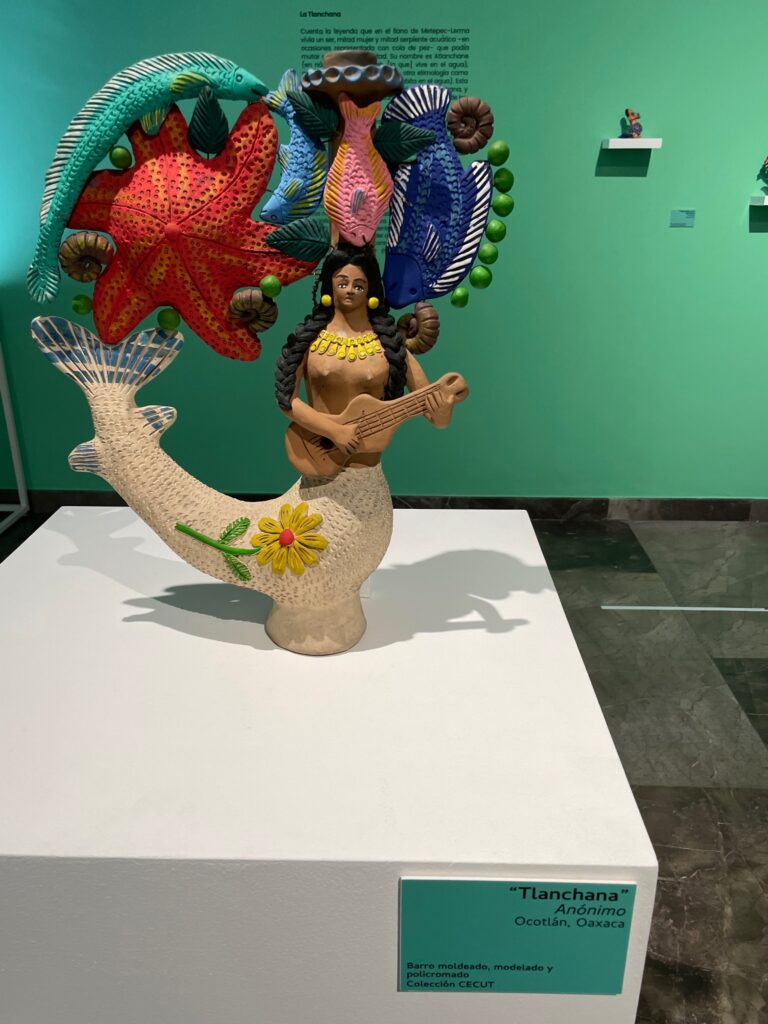

The last room had Catholic imagery and some art depicting the afterlife.
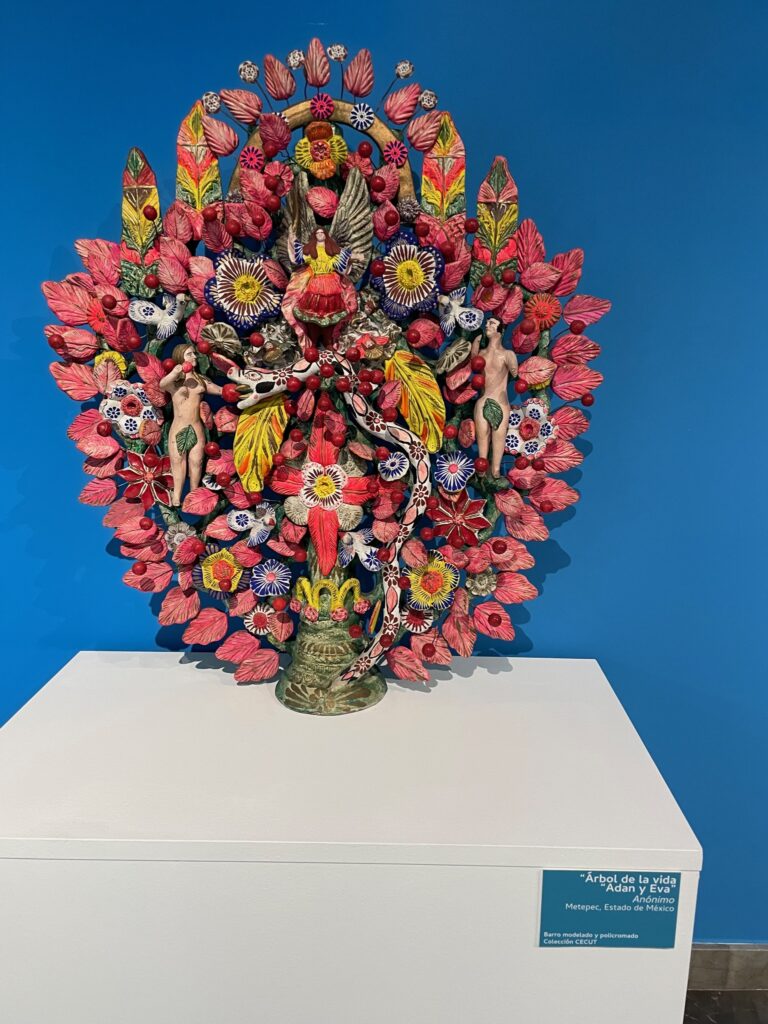
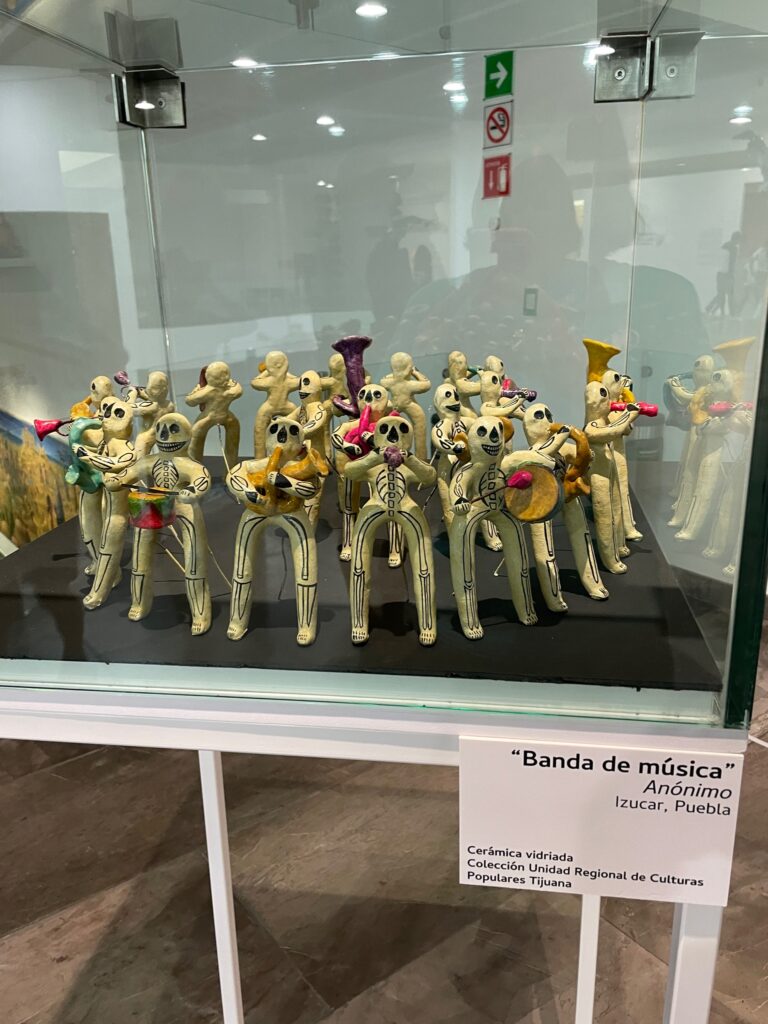
The majority of the art on the upper level was creepy. Downstairs, there wasn’t much. There was one large Neo-surrealist painting that showed the progression of time in Mexico, and it was also a little bit creepy.

There were also six colorful pieces that were interactive, so if you downloaded an app and focused your phone on the painting, you would see the painting do things like the butterfly flying.
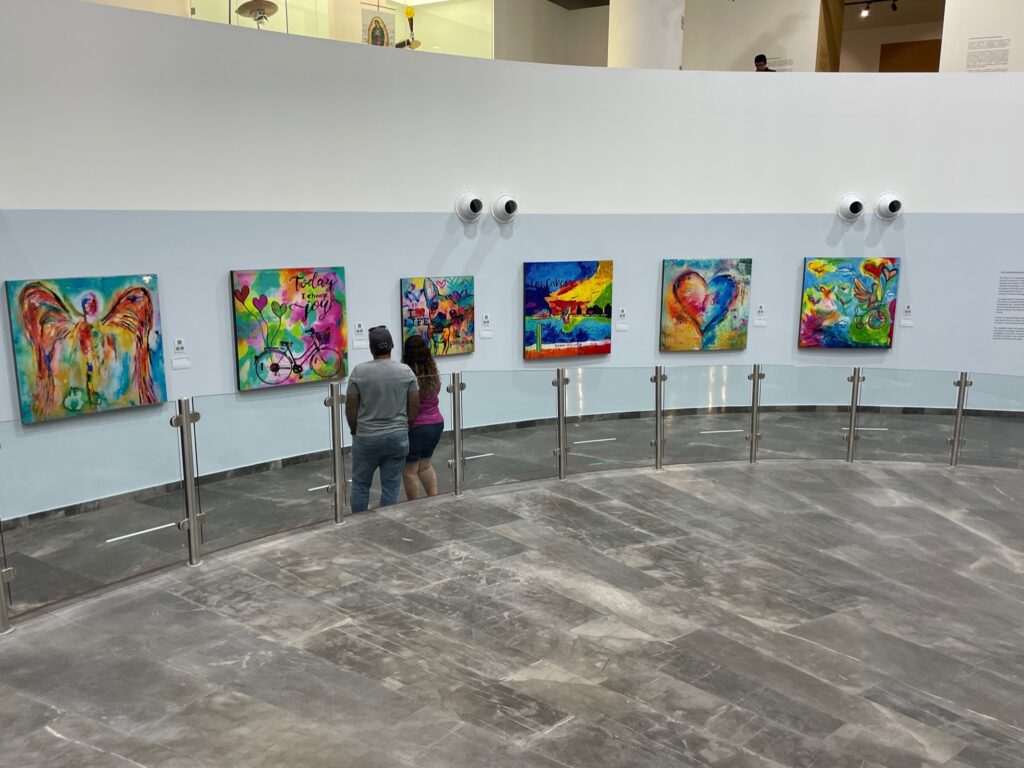
We didn’t download the app, but a fellow museum goer let us look at it through her phone. Thanks to the app, we realized that these interactive pieces were for sale… we wondered if other pieces were for sale and if this was an art gallery, not an art museum.
We weren’t there for long. Keith said the museum creeped him out and insisted on leaving quickly. After the museum, we walked to a nearby grocery store. Since we only needed a few items, there was no need to make a special trek to Chedraui. On the way, we stopped for ice cream/fruit bars at La Flor de Michoacan.
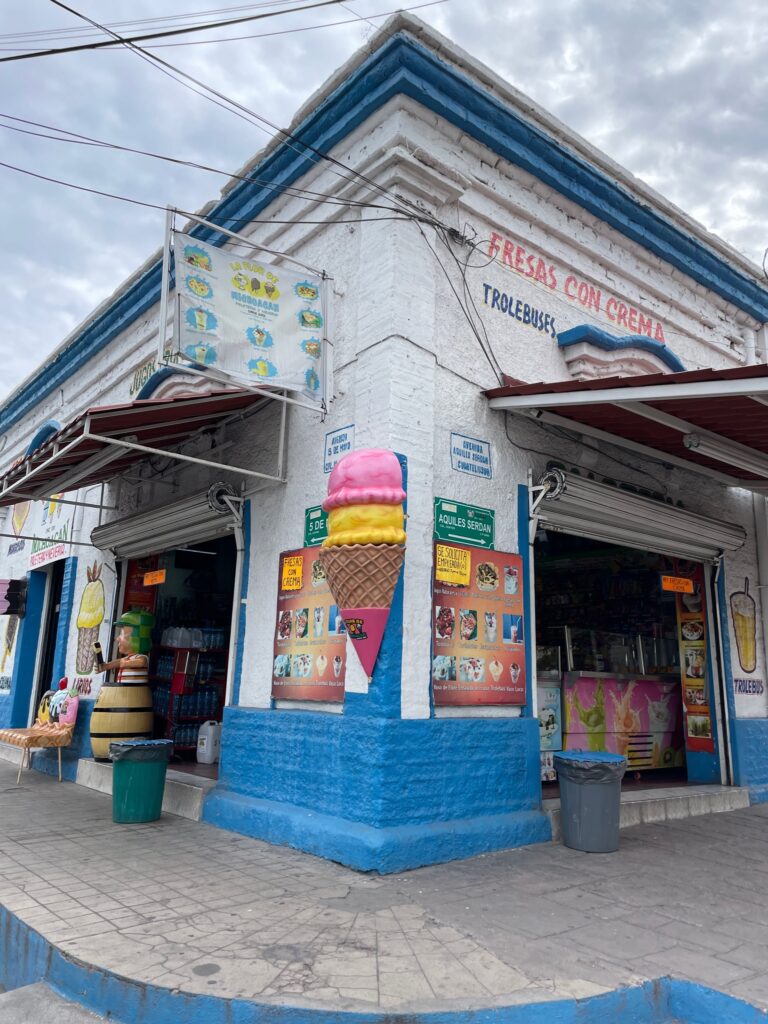
Grocery shopping was uneventful, and we caught an Uber back to the marina. We again had to wait about 10 minutes for our ride to be accepted. We didn’t have a dramatic sunset like we usually do. The low clouds mostly blocked the light from the sun.
